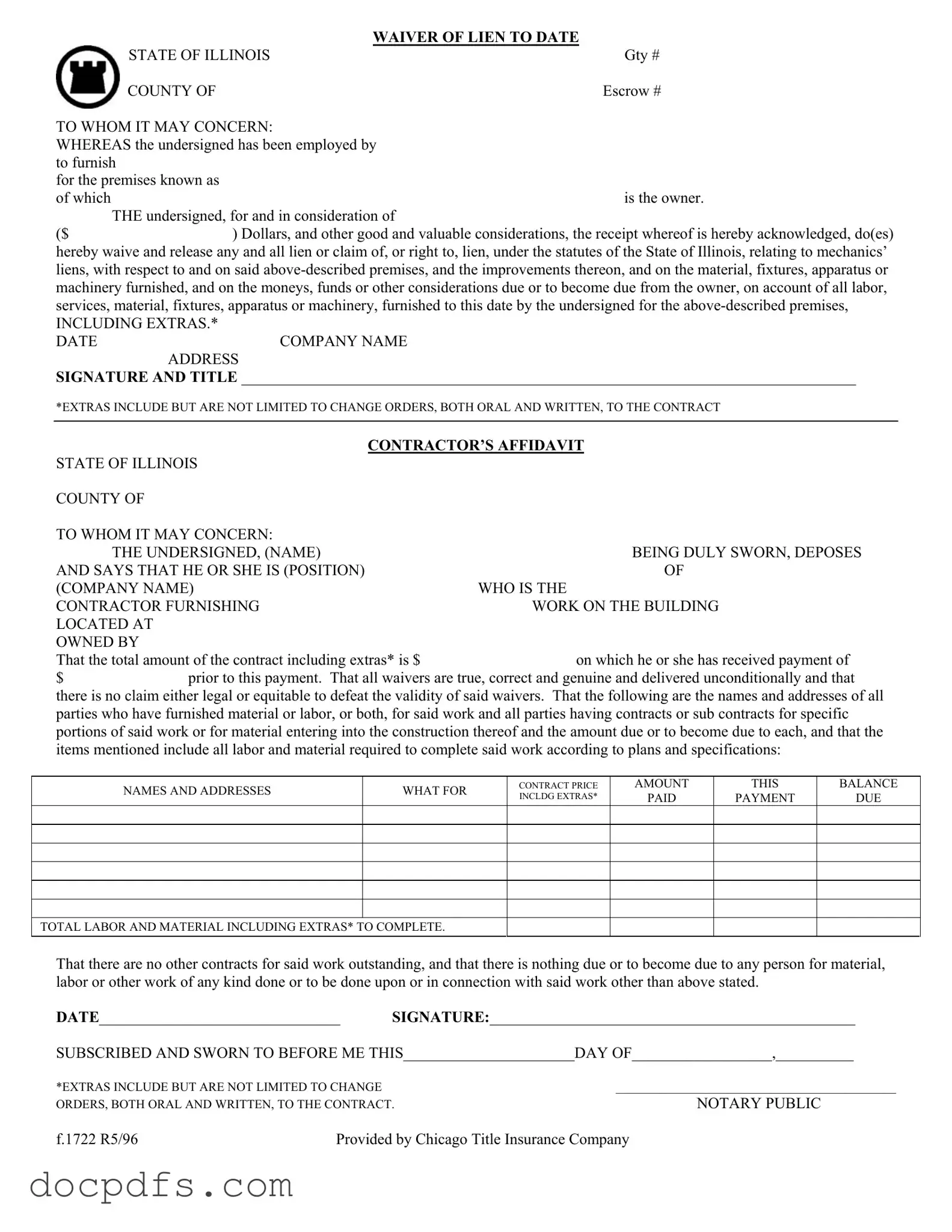The Chicago Title Waiver Format form is a legal document used in Illinois that allows contractors and suppliers to waive their right to file a mechanics' lien against a property. This waiver is typically executed after payment has been received for work performed or materials provided.
This form is intended for contractors, subcontractors, and suppliers who have provided labor, materials, or services on a construction project. If you have been paid for your work, using this waiver helps protect the owner from potential lien claims.
To complete the form, you will need to provide:
-
Your company name and address
-
The name of the property owner
-
The address of the property
-
The total contract amount, including extras
-
The amount you have received prior to this payment
-
The names and addresses of all parties involved in the project
-
The amount due or to become due to each party
"Extras" refer to any additional work or materials that were not included in the original contract. This can include change orders, both oral and written. It is important to account for these extras when calculating the total contract amount.
If you do not complete the Chicago Title Waiver Format form, you may retain the right to file a mechanics' lien against the property. This could lead to legal complications for both you and the property owner if payment disputes arise in the future.
Yes, the form must be notarized. This means that you will need to sign the document in front of a notary public, who will then verify your identity and witness your signature. Notarization adds an extra layer of authenticity to the waiver.
No, the Chicago Title Waiver Format form is specific to a single project. If you have multiple projects, you will need to complete a separate waiver for each project to ensure that all details are accurately represented.
If you have questions while completing the form, it is advisable to seek assistance from a legal professional or a document preparer who is familiar with construction law in Illinois. They can provide guidance to ensure that the form is filled out correctly.
The form can typically be obtained from the Chicago Title Insurance Company or through legal document services that specialize in construction-related documents. Ensure you have the most current version to avoid any issues.
